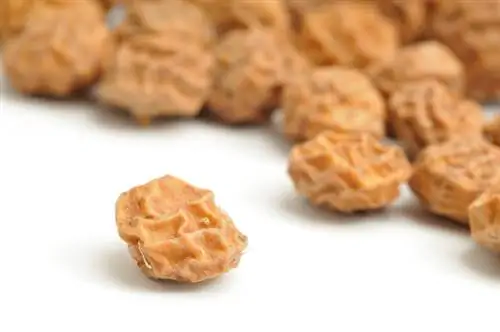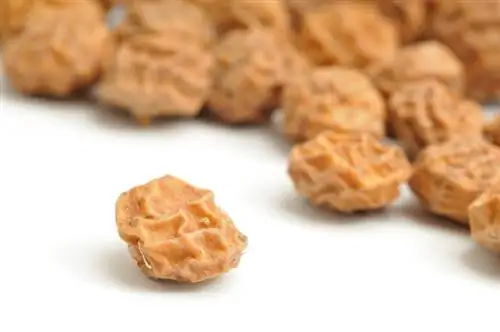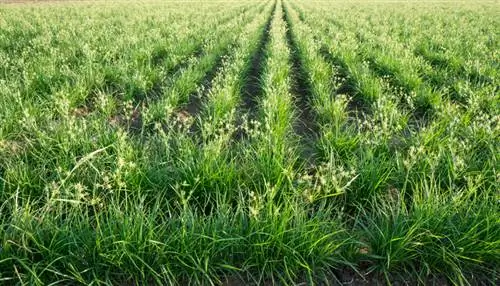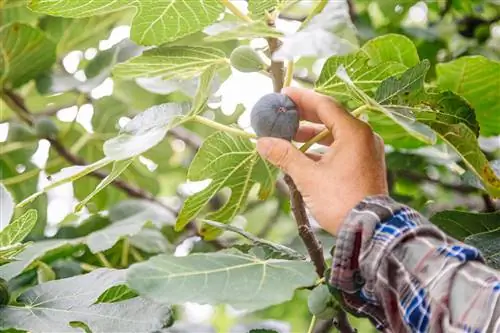- Author admin [email protected].
- Public 2023-12-16 16:46.
- Last modified 2025-01-23 11:20.
The tiger nut, also known as the tiger nut, is not yet well known in this country. The sour grass plant is native to southern regions, but can also be grown in the home garden or in pots. The small underground tubers are harvested in autumn.

How is the tiger nut harvested correctly?
The tiger nut harvest is done in autumn by first pulling the plant greens out of the ground, loosening the soil with a digging fork and collecting the tiger nuts by hand. After harvesting, the tiger nuts are cleaned, dried and can then be further processed.
The tiger nut harvest begins in autumn
The tiger nut harvest begins in mid-October. It should be completed before it starts to freeze. Frost causes tiger nuts to rot.
How to harvest tiger nuts correctly
- Pulling green plants out of the ground
- Separating tiger nuts
- Loose the soil with a digging fork
- Picking up tiger nuts by hand
- Sifting potting soil
Tiger nuts grow underground, similar to peanuts, and therefore must be dug up. First the green is drawn out.
Use the digging fork to loosen the soil around the mother plant. Most tiger nuts are found where the plant greenery has covered the ground. But there can still be tiger nuts in the soil even 50 centimeters away from the mother plant. Pick the fruit out of the ground.
If you have grown the tiger nut in a pot, harvesting is a little easier. Simply tip the bucket (€75.00 at Amazon) over and pour the loose soil through a fine-mesh sieve or rabbit wire. Then all you have to do is collect the tiger nuts.
Let tiger nuts dry after harvesting
After harvesting, clean the tiger nuts of any dirt. To do this, rinse them carefully with water.
The tiger nuts must then be stored in a dry, warm place until they have dried. This way they will last for several months.
The fruits can be used whole, chopped or ground into flour in all recipes that are suitable for nuts or almonds. Tigernuts can also be used to make tigernut oil or prepare drinks.
Up to 500 tiger nuts on one plant
Tiger nuts are very small and taste almost like almonds. They are just the size of a fingertip. A single plant forms up to 500 small, he althy tubers.
Tip
The above-ground green parts of the tiger nut plant also contain no toxins. They can be used well as animal feed.






